Intro: Land Reclamation As An Agent
The landscape and seascapes of Singapore have long been tied with her progress as an entrepot trading center. Since the founding of colonial Singapore, the original swaths of mangroves and coastlines have long been tamed in the pursuit at the commercialization and growth of the port.
Since independence in 1965, the land area of Singapore increased by close to 20% from 583km2 to 721.5km2 while the gross domestic product grew three-hundred-fold to USD$308 billion during this same period as part of a strategy of developing key industrial sectors on newly reclaimed land. This, in effect created a cycle of consumption to which land was viewed as expanded commodity with a monetary value. Yet, this commodification fails to acknowledge the environmental and ecological effects destroyed at the expense of national progress.
With the advent of rising sea levels and disruption of sand imports, it is clear that this consumptive cycle of reclaiming sand into territory can no longer be sustained in the long run. Moreover, this current development further outlines our overreliance on external exchanges to sustain our territory and economy.
Seascape as a territorial synthesis
This intertwining of open water and lifestyles can be traced to the earliest sedentary land-based settlements, or settlements with a permanent location. In their essay, Islands: Rethinking the Settlement form from Property to Care (2019), architects Pier Vittorio Aureli and Maria Giudici highlights how through the formation of these land-based settlements, large swaths of land becoming more tamed and less diverse owing from the intensification of mass agriculture. As such, this has created a system in which agriculture was no longer a mere system of sustenance but rather a form of accumulation and surpluses to which a power base and autonomy is developed upon.
This was in stark comparison to the more diverse waterscapes found on water-based settlements. Owing to their more nuanced environment, water-based settlements had to adopt a more equitable lifestyle based on their pool of shared resources on the water . This was achieved through a form of commonality in resources and a degree of care for the surrounding environs. In essence, it is through this notion of “care and commoning” adopted among the dwellers that allowed for a more equitable and resilient growth model as any attempt at commensalism would have destroyed the foundations of the entire settlement.
In outlining this theory put forth by Aureli and Giudici, it forces us to consider if an entirely new approach can be presented in dealing with territorial resilience. One that consider the philosophy of care and commoning as an antidote to the current consumptive lifestyles of the land.
Of Coastlands & Oil Rigs
Stemming from its proximity to the major oil fields of South-East Asia, Singapore is among the world’s hubs for the building and development of oil rigs . In essence, it is through the growth of these industries that an artificial maritime landscape has arose.
However, in recent years the oil industry in the South East Asia have been with faced declining production. This, coupled with the move toward cleaner energy sources presents a potential scenario of a glut of decommissioned oil rigs over the next 20-30 years . These circumstances create a unique potential in which an artificial maritime seascape, in the form of oil rigs and ships, made and build in Singapore can be reformed as an antidote to conventional land reclamation today. In doing so, it highlights a reversal in the landscape as an agency of consumption to that of an agency of resilience.
Located along the East Coast Parkway, the Eastern Lagoon represents the flip-side of Singapore’s Land Reclamation program, as an ode to recreation and waterfront living. Despite being a nation of islands, only a mere 7.5% of coastline is accessible for public use, with the Lagoon representing a portion of this length with key recreational nodes along this stretch. Owing this popularity, there have been a reluctance to reclaim this coastline with such plans in the limbo for the last thirty years.
In the synthesizing of this sun-set industry and the coastlines, the East Coast 2065 represents a rethinking of the seascape and how a new form of reclamation can take place from the sea, one that is equitable and productive whist retaining a form of territorial resilience that the sea has long given this land.
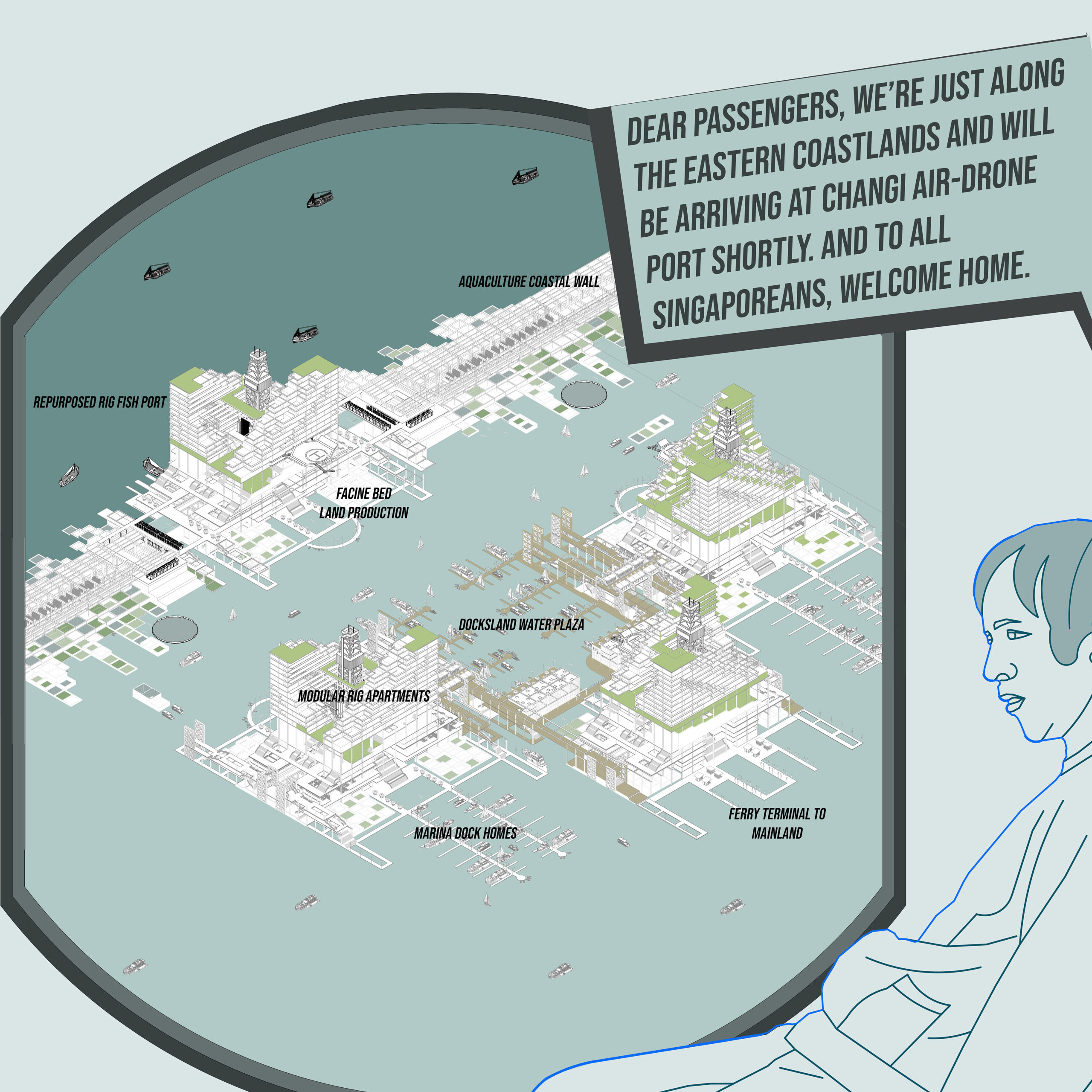
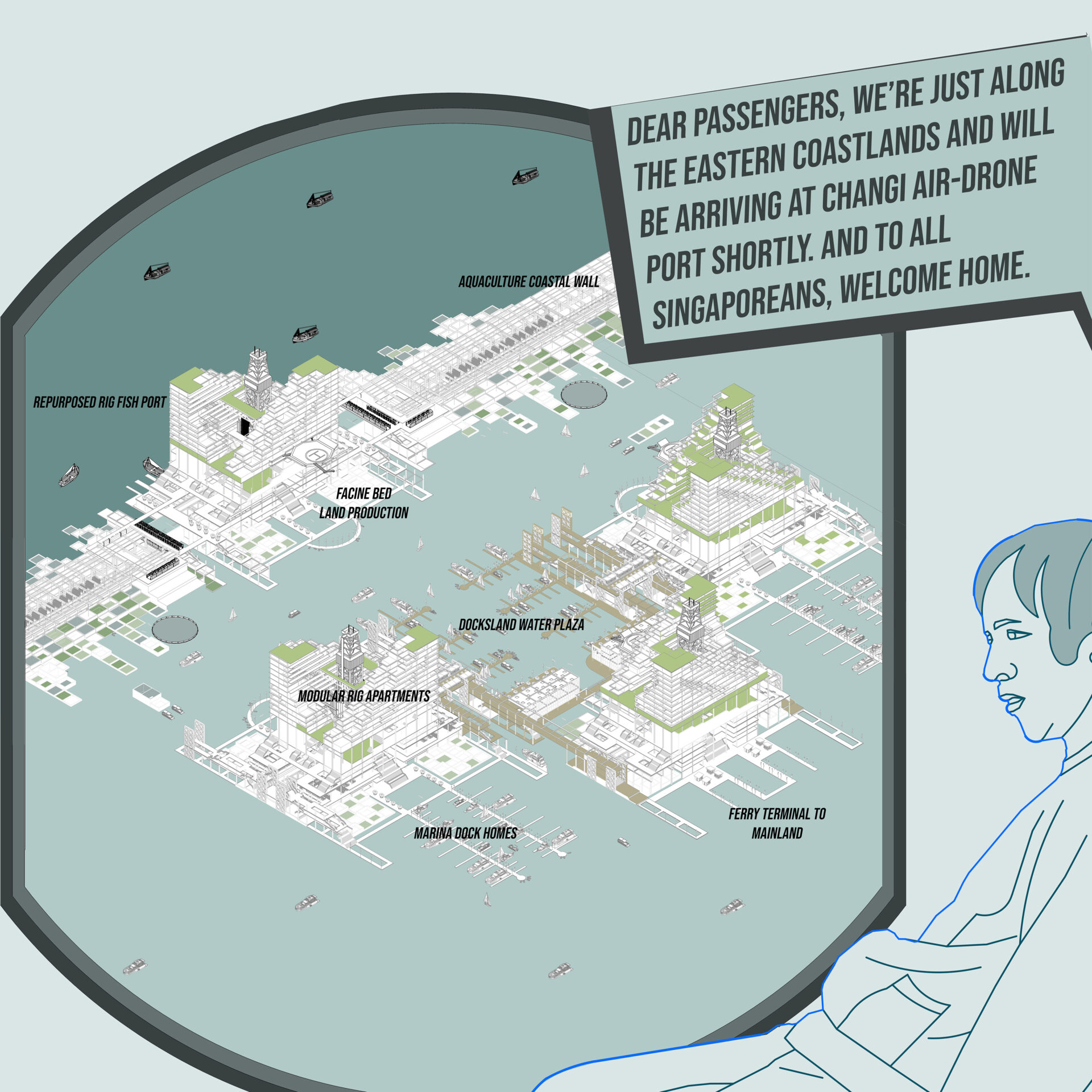
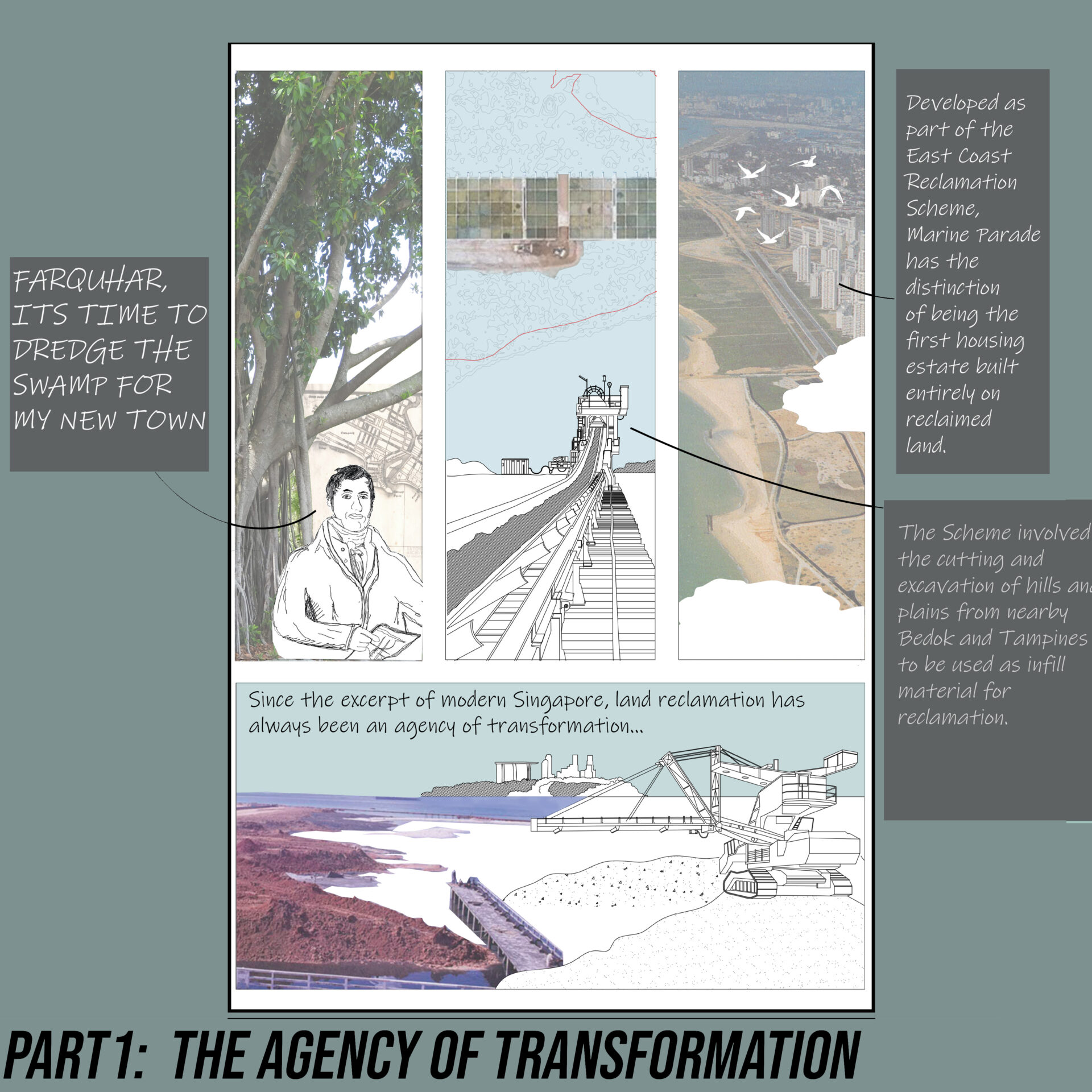
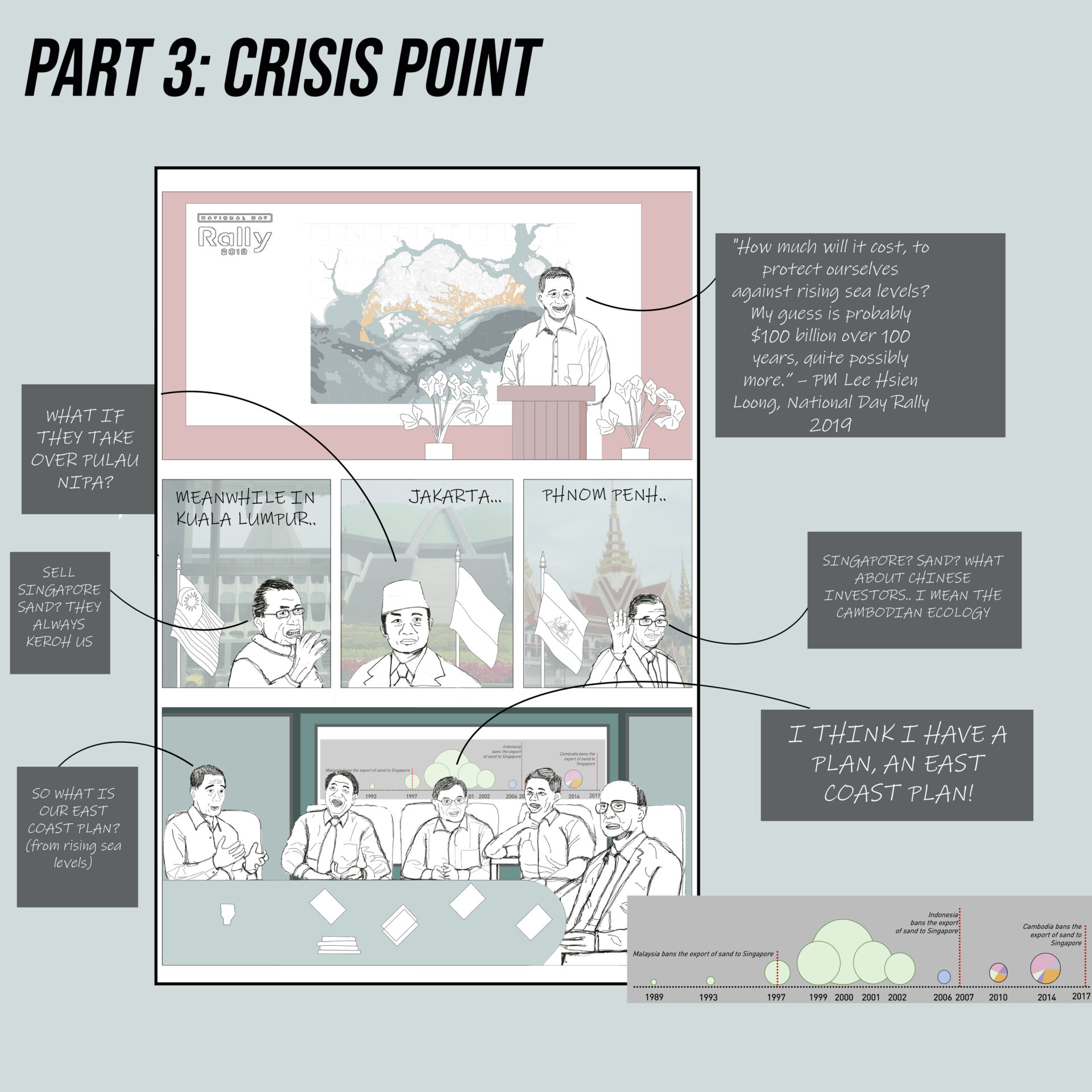

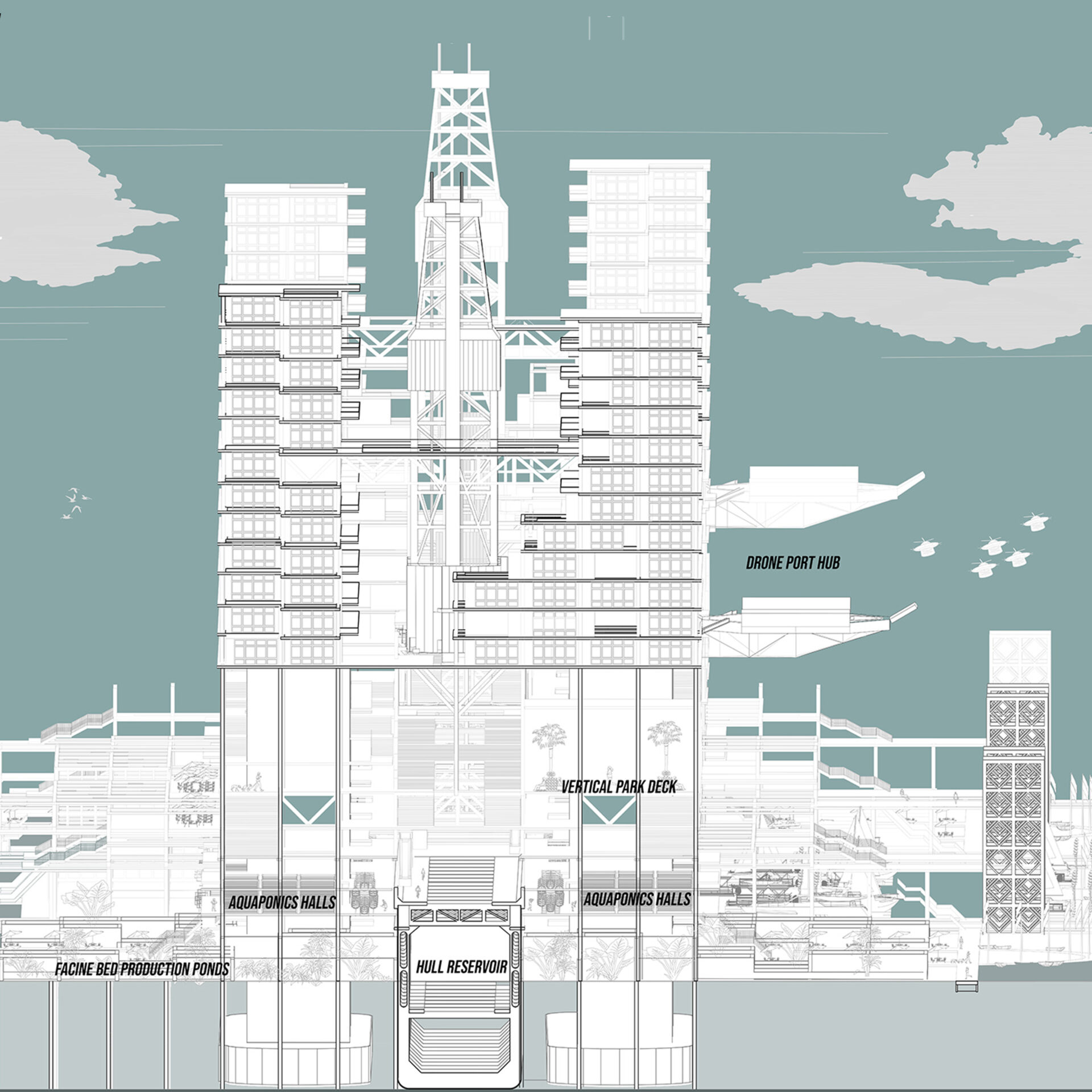

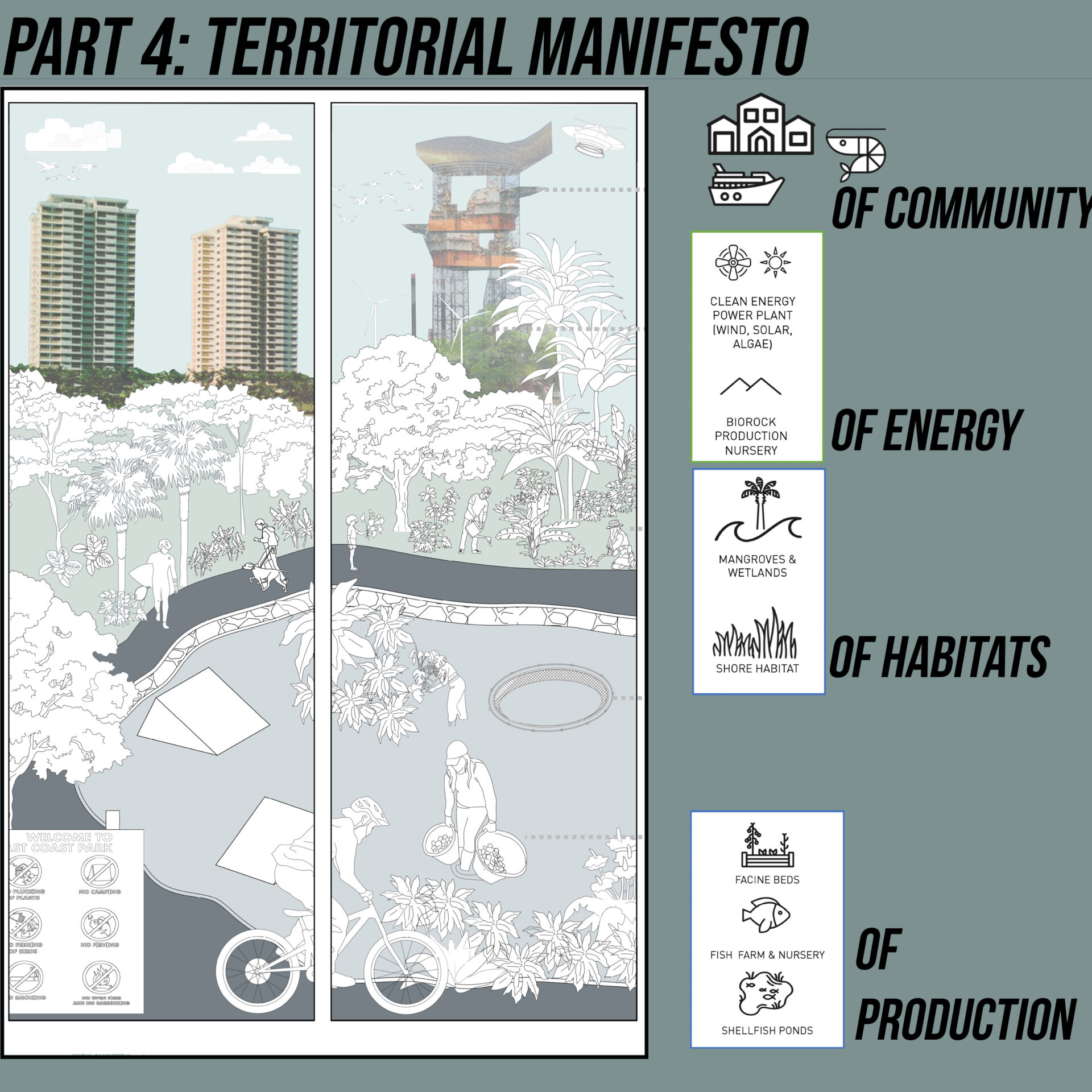
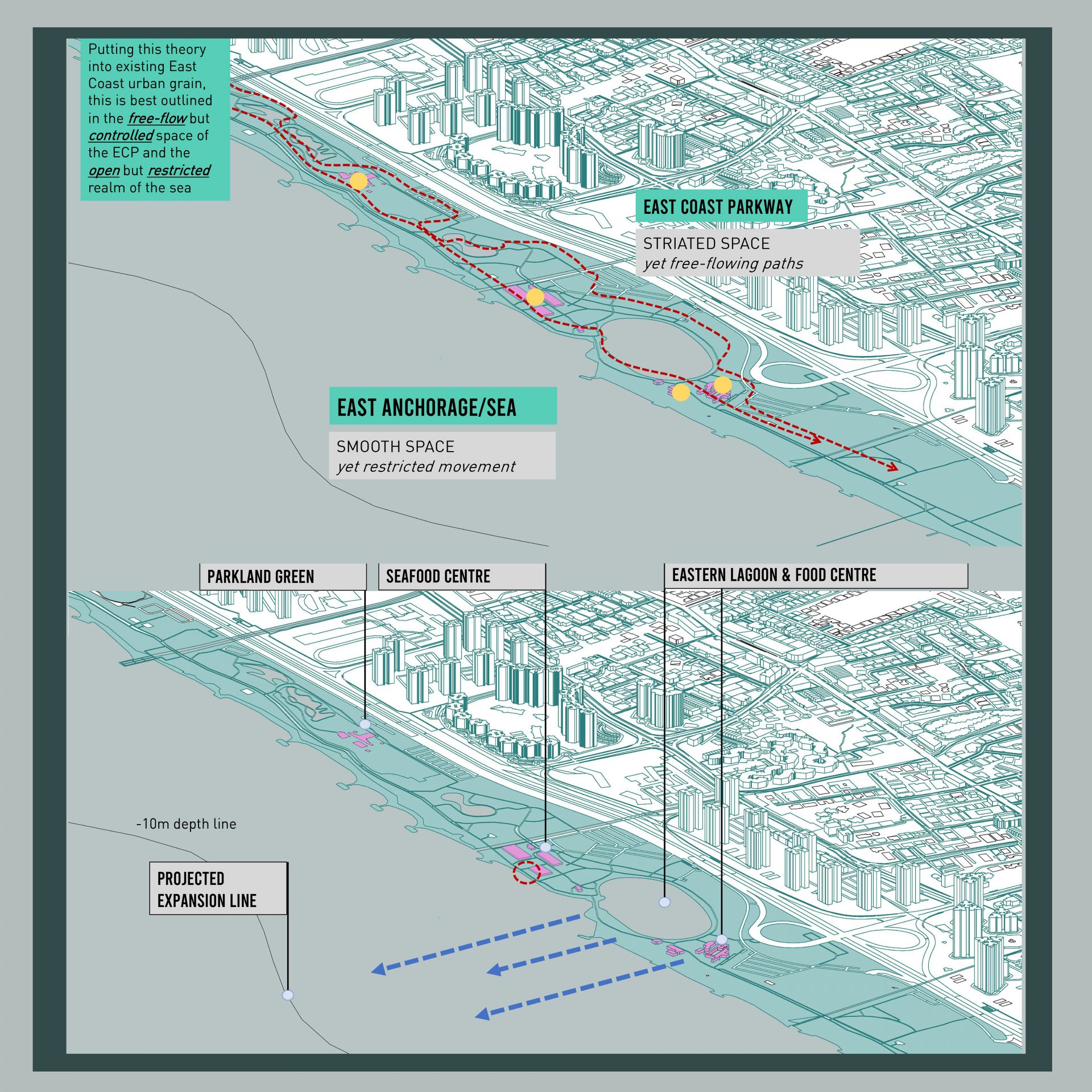
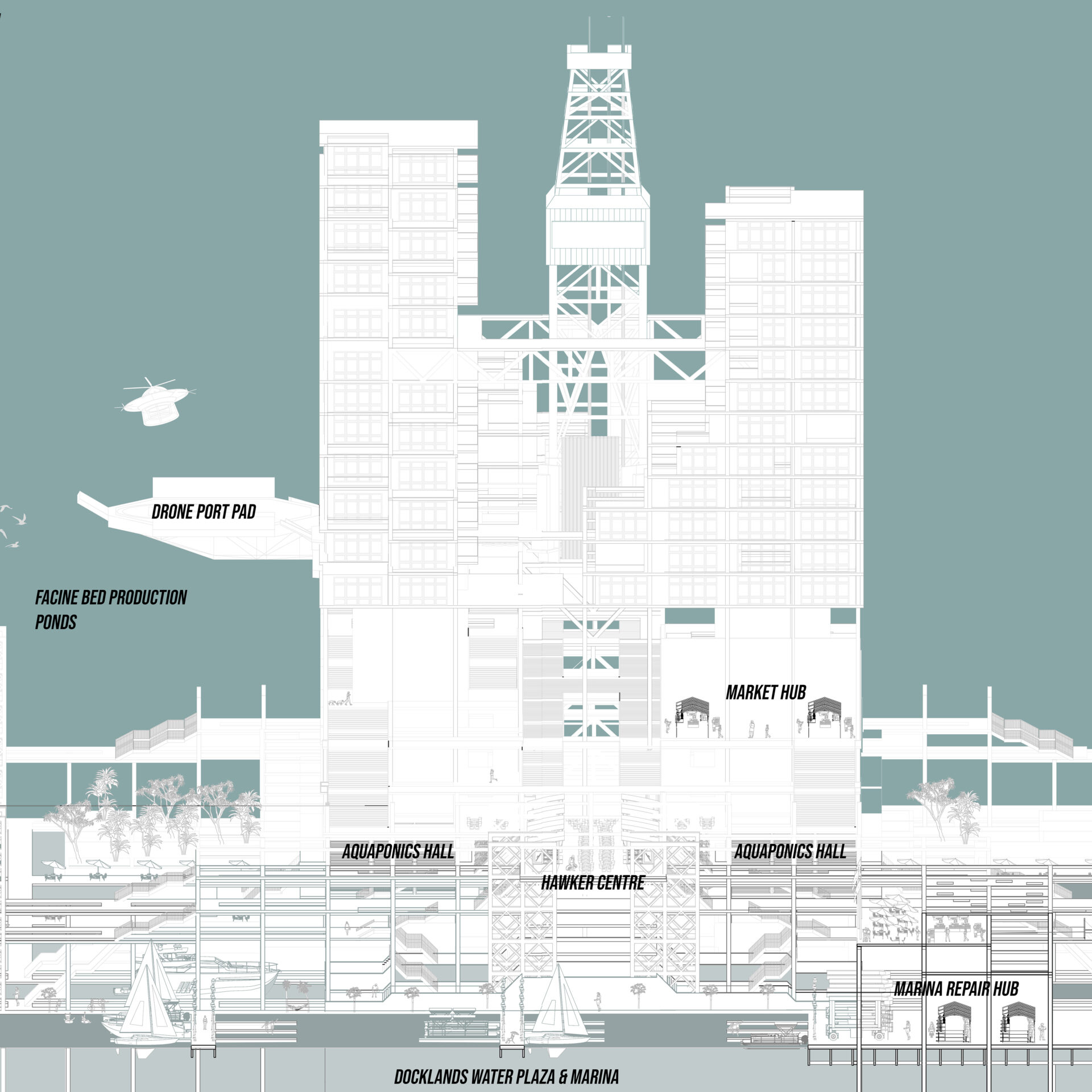
Supervisor's comments:
The seascapes of Singapore have long been tied with her economic progress – transforming her seascapes into industry through land reclamation. With the advent of rising sea levels, depletion of sand imports and the inevitable decline of the fossil oil industry, it is clear that this consumptive cycle of using sand to reclaim sea into territory is unsustainable in the long run. Jonathan’s proposed East Coast Plan 2065 seeks to explore how the existing East Coast seascape can act as a new form of territorial synthesis by tapping into the existing oil-rig building industry -reusing and upcycling defunct oil-rigs it into a new floating oasis of seascape living, one of territorial equity and sustainable development.
- Prof. in Practice Richard Ho